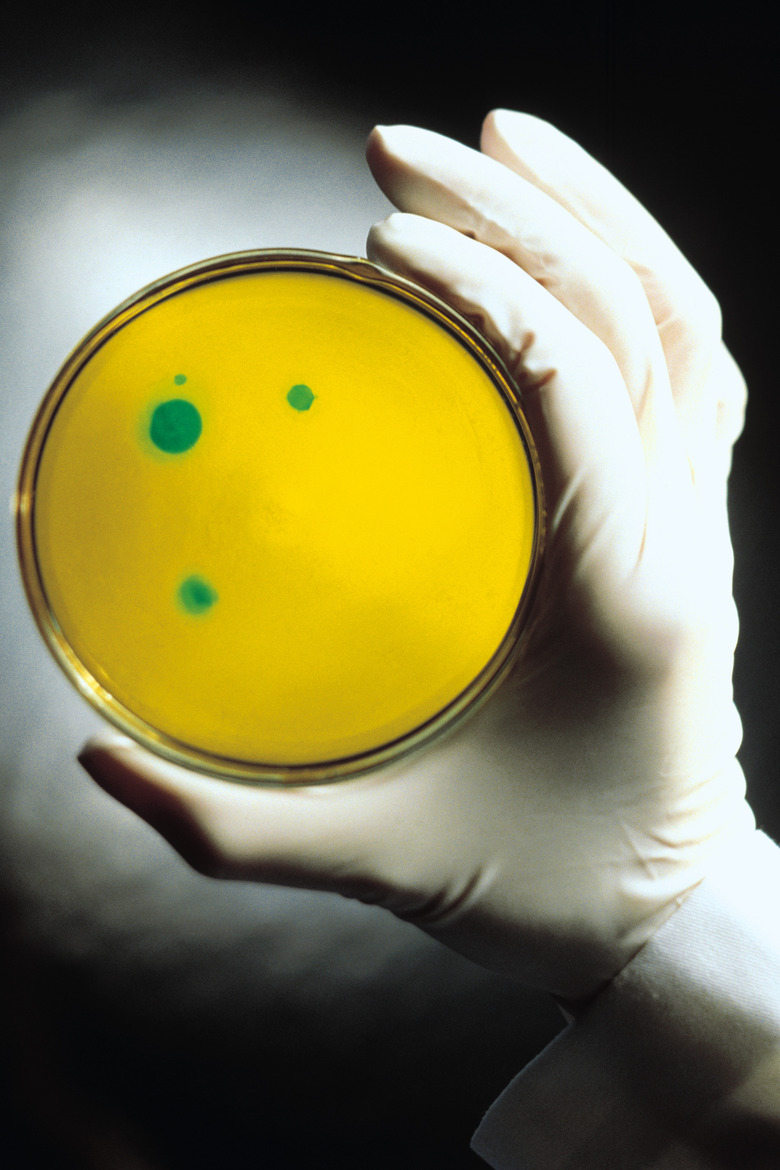The Best Ways To Grow Bacteria On Agar
Testing the levels of bacteria in common items is an interesting, if gross, experiment to undertake. Students grow bacterial cultures on agar, which is a gel-like substance that give the bacteria nutrients and food they need to survive. Taking a few simple steps gives those microbes their best chance to grow on the agar, making the experiment more successful.
Type of Agar
Type of Agar
Several types of agar exist and most of them will grow bacterial cultures. Some of these varieties, though, are dangerous for student use and some are not optimal for growth of bacteria though they may grow other microbes.
According to Science Buddies, the best type of agar to use is a nutrient agar, like an LB agar, which will not grow one type of bacteria over another. If you purchase a bacteria growth kit for your science experiment, you may find that you don't have a choice of agar, but the company will use one that is effective and safe.
Moisture Control
Moisture Control
In order to continue to be effective, the agar must stay relatively moist. If you leave it out in the open, not only will this create a potentially dangerous situation, it will dry the agar and petri dish bacteria out. Instead, carefully close the lid on the petri dish and place the dish in a clear, sealed plastic bag. This will allow you to view the bacteria growth with an extra layer of contamination-protection.
Incubation
Incubation
Bacteria prefer to grow in warm areas. Science Buddies states that the optimal temperature for bacterial culture growth is around 90 degrees Fahrenheit, but Steve Spangler Science warns not to go over 98 degrees.
If you're not in the middle of a hot summer, you'll need an incubator to keep the petri dish bacteria at the right temperature. If you don't have a laboratory incubator, you can build a makeshift one by putting a small lamp with a 75-watt bulb in an aquarium with a plastic covering on top.
Time
Time
Bacteria are tiny cells, invisible to the naked eye. When you're growing bacteria, the colonies you see are actually millions of cells grouped together. Though you might begin to see the growth after a day or two, some types may need more time. For the best results, you need to give the bacteria time to grow before doing a culture test.
If you're not satisfied with your results after two days, let it sit in the incubator for a few more days to see if this spurs growth. If not, you may have an example of something in the home that does not have a large amount of bacteria. Repeat the culture test experiment with that item to see if you get the same results.
Bacterial Culture Species
Bacterial Culture Species
While agar is one of the best ways to create a lab-based bacterial culture, not all bacteria species are able to be cultured easily in a lab setting.
Common species that are used in lab experiments include various strains of E. coli, Mycobacteria, Lactobacillus reuteri, Bacillus subtilis and Streptococcus thermophilus. These types of bacteria are easily cultured on agar and other forms of culturing methods (broth cultures, blood cultures, etc).
There are some bacteria that do not grow well in lab settings on any type of culturing material, including agar. In fact, scientists estimate that only about 1% of bacterial species are able to be cultured in vitro (aka in the lab).
It's likely that culturing materials like agar can't provide all of the specific environmental conditions that these types of bacteria need to survive; environmental conditions that species need can be impossible to replicate in a lab setting. They might need very specific pH levels, temperature, salinity, nutrients and other things that scientists cannot provide (or simply don't know that those bacteria need).
Cite This Article
MLA
McCormick, Maggie. "The Best Ways To Grow Bacteria On Agar" sciencing.com, https://www.sciencing.com/ways-grow-bacteria-agar-13461/. 31 July 2019.
APA
McCormick, Maggie. (2019, July 31). The Best Ways To Grow Bacteria On Agar. sciencing.com. Retrieved from https://www.sciencing.com/ways-grow-bacteria-agar-13461/
Chicago
McCormick, Maggie. The Best Ways To Grow Bacteria On Agar last modified March 24, 2022. https://www.sciencing.com/ways-grow-bacteria-agar-13461/
